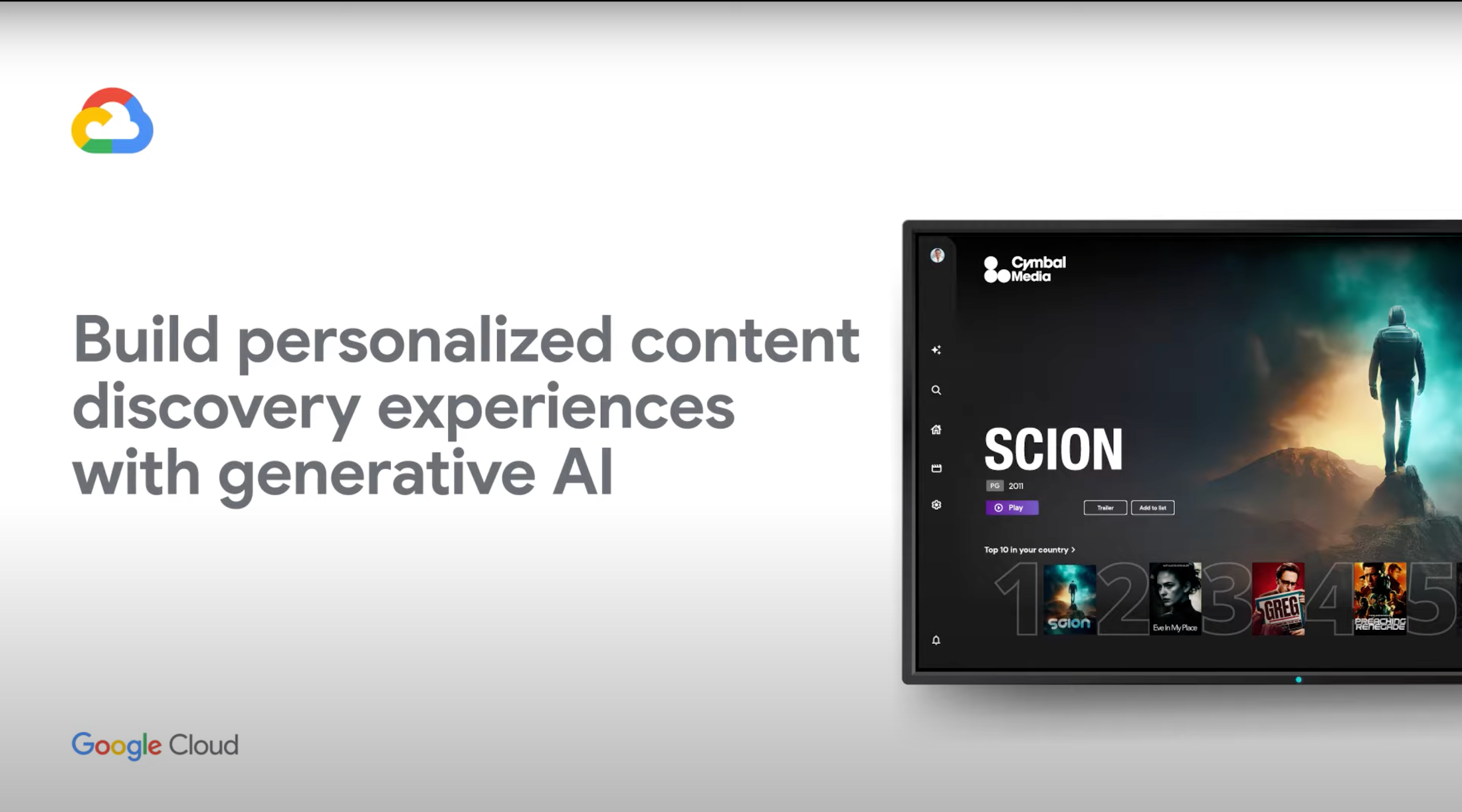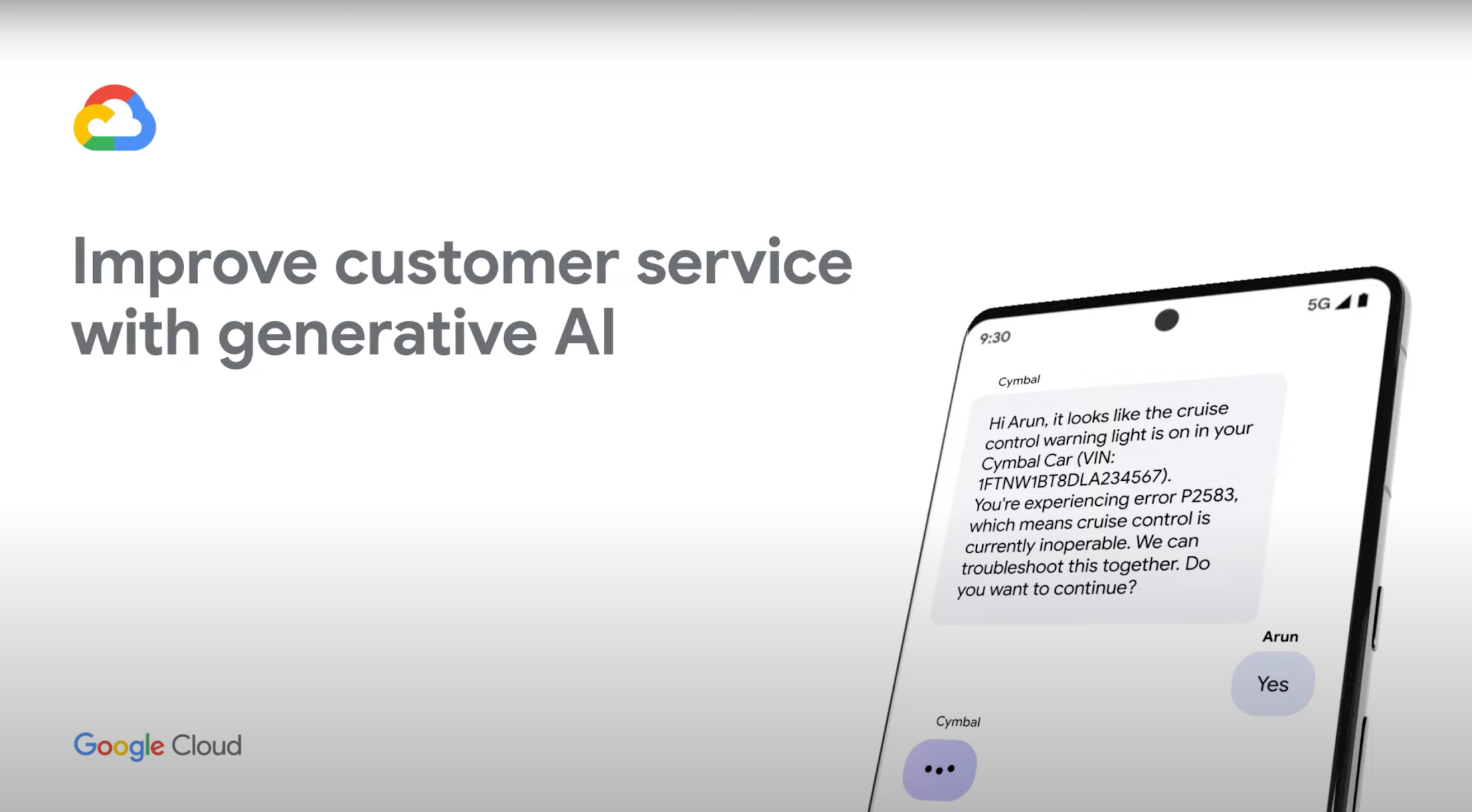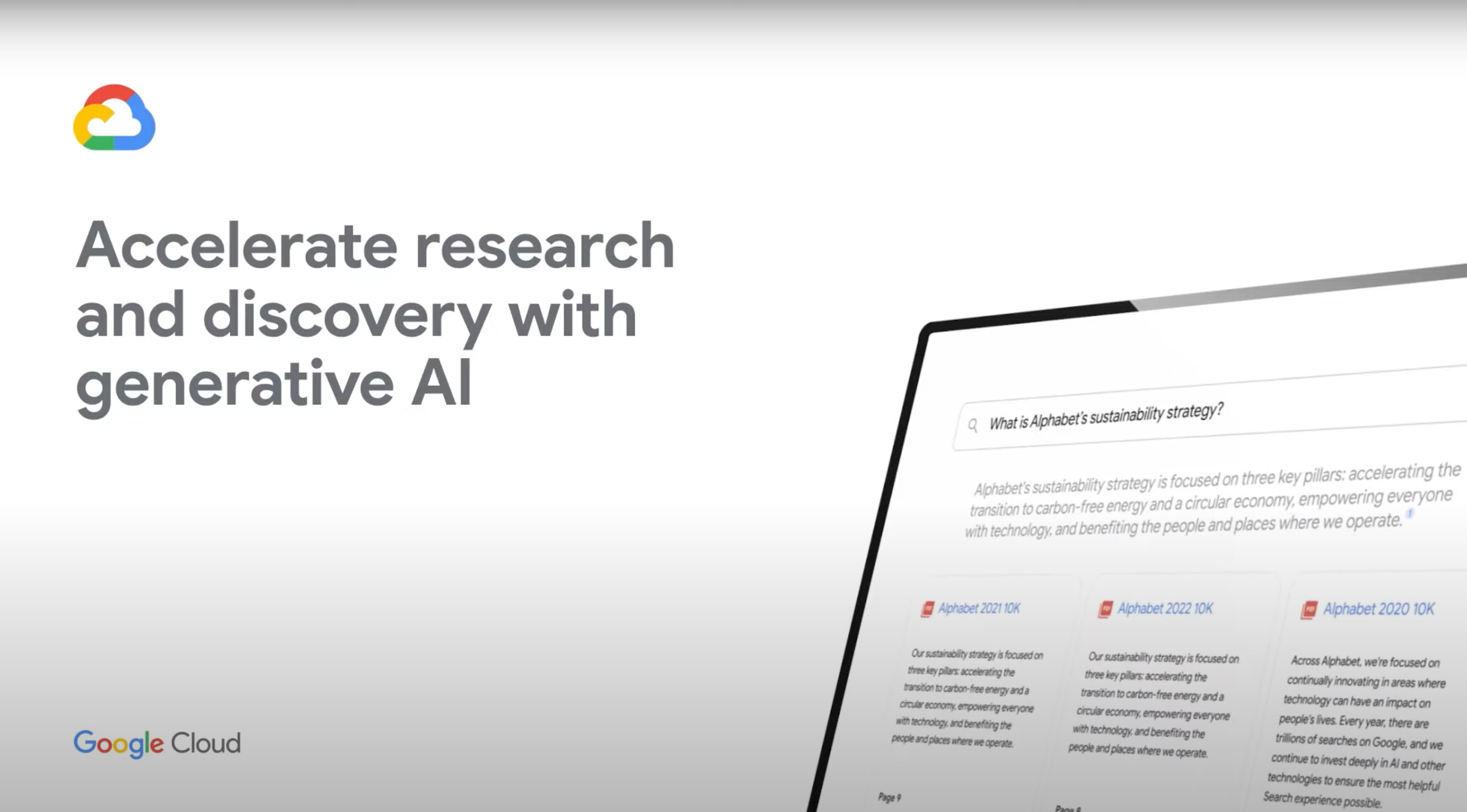The Prompt: 5 generative AI platform pillars + execs compare generative AI to past disruptions

Philip Moyer
Global VP, AI & Business Solutions at Google Cloud
Business leaders are buzzing about generative AI. To help you keep up with this fast-moving, transformative topic, each week in “The Prompt,” we’ll bring you observations from our work with customers and partners, as well as the newest AI happenings at Google. In this edition, Philip Moyer, Global VP, AI & Business Solutions at Google Cloud, reviews five pillars for generative AI platform capabilities and explores how business leaders think generative AI stacks up to previous disruptions.
We just wrapped up our Executive Forum, which included general availability announcements of two of our most exciting generative AI products: Generative AI support on Vertex AI with Generative AI Studio and Model Garden, which let customers access, customize, deploy, and manage foundation models; and Enterprise Search on Generative AI App Builder, which makes it fast and straightforward for organizations to build search engines and chatbots that combine generative AI with internal data. With customer news from Mayo Clinic, GA Telesis, PhotoRoom, and Priceline, it was a big day in our journey to empower businesses, governments, and developers to innovate with this disruptive technology.
In this week’s edition of “The Prompt,” I want to dive into the Executive Forum for two reasons. First, we’ve spent a lot of time in this blog series discussing why organizations need platform capabilities, not just models—and Google Cloud CEO Thomas Kurian’s keynote from the event included a terrific overview of what an effective platform should include. Second, as we’ve done at past events this year, we conducted informal surveys to learn how executives are approaching generative AI, so I want to share our updated findings. Let’s jump in!
Five platform pillars to support generative AI strategies
Organizations want to leverage generative AI for a range of use cases: creating amazing content, synthesizing and organizing information, automating business processes, building engaging customer experiences, and more. To help actualize these use cases, leaders should consider platform capabilities across these five dimensions:
Infrastructure: Smaller foundation models are opening new possibilities, like running a model on a laptop or other consumer-grade hardware. To run the most powerful models at scale, however, there is no substitute for cutting-edge infrastructure. Cloud providers offer obvious potential advantages, such as the ability to spin up resources as they’re needed, and managed services that let organizations focus on building instead of IT curation. Even so, for a given organization’s requirements, some cloud offerings may be better suited than others. For example, does a provider offer different infrastructure capabilities, such as GPUs and TPUs, that let organizations pick the best options for their workloads, latency requirements, and budget? Does it simply offer computing power or does it preserve an organization’s ability to choose?
Foundation models: I’ve emphasized in my previous articles that organizations require more than foundation models to ramp up their generative AI strategies—but foundation models are still the starting point. Organizations need access to a variety of models and modalities, from text and code to speech, image, and, in the future, even audio and music. For some businesses, training proprietary foundation models from scratch might be worthwhile, but given the cost, complexity, and potentially limited upside of these efforts, we expect most organizations to leverage options from cloud providers or open-source communities.
Model tuning and app building: Access to foundation models is a starting point, but organizations need ways to customize models for their needs and easily integrate them into apps and digital experiences. A range of platform capabilities are necessary to fulfill these requirements. For example, some use cases require models to be deeply fine-tuned on new data whereas others need only lighter customization that doesn’t change a model’s weights. Likewise, some forms of customization necessitate data science expertise, but in many cases, organizations are less focused on machine learning nuances than empowering developers and upskilled knowledge workers or business analysts to create apps or AI-enhanced workflows.
Ubiquitous AI assistance: Beyond building custom apps themselves, many organizations want AI-powered productivity enhancements across all business workflows. This might include productivity suites infused with generative AI, such as Google Workspace, but over time, companies are likely to expect this kind of assistance across all the organization, like Duet AI for Google Cloud provides by providing contextually-aware AI collaboration throughout our platforms.
Ecosystems: Cloud services are an excellent way for organizations to co-innovate with the largest technology companies— but even the biggest, most advanced cloud providers are not a one-company show. Ecosystem partners help cloud providers flesh out their offerings and provide more options for customers, from additional infrastructure and foundation model choices, to consulting services, to connections to open-source communities and innovation consortiums.
These pillars form a blueprint with which organizations can assess vendors and technology partners, helping ensure they have the resources they need today and the options and flexibility they’ll need going forward. But speaking of today, let’s turn to our newest survey results.
New insights from our informal executive surveys
We asked attendees at our Executive Forum several questions that hadn’t appeared in our previous informal surveys, headlined by queries about where generative AI falls alongside other major technology advances. Not surprisingly, many attendees compared generative AI to the biggest disruptions from the last two decades, such as mobile devices or cloud services. A more eye-opening result is that the largest group of respondents chose even loftier comparisons: more leaders at the event compared generative AI’s would-be impact to that of the internet than to any other development.
Reinforcing that executives see generative AI as the biggest potential technology advance in decades, nearly all respondents agreed or strongly agreed that AI will soon be critical to the success of any organization. Attendees recognize that we’re in the early stages of this revolution, with the vast majority agreeing that organizations are “at the very beginning of the generative AI journey.” At the same time, these leaders feel pressure to accelerate. A slight majority stated that they already feel “late” to this transition and only around one in twenty-five expressed “no urgency” to adopt generative AI technologies. Though not a scientific survey, these results clearly demonstrate that generative AI is becoming a strategic imperative.
Providing some insight into how companies plan to navigate the quickly-evolving landscape, over 80% of respondents said they expect AI to require tradeoffs between short-term and long-term investments. In line with our earlier surveys, a majority of respondents indicated their companies possess some skills required to execute their AI strategy but still lack critical expertise.
Don’t wait to start building
Since we started this blog series two months ago, a range of new generative AI foundation models, tools, and apps have hit the market, helping this disruptive technology to transition from the purview of cutting-edge researchers to enterprise-ready services with onramps for all levels of expertise and all kinds of needs. We’ll be back next week with more of the latest generative AI news from Google Cloud— but in the meantime, don’t miss our new videos about turning our foundation models and platform tools into more delightful, personalized, and useful apps and experiences.






